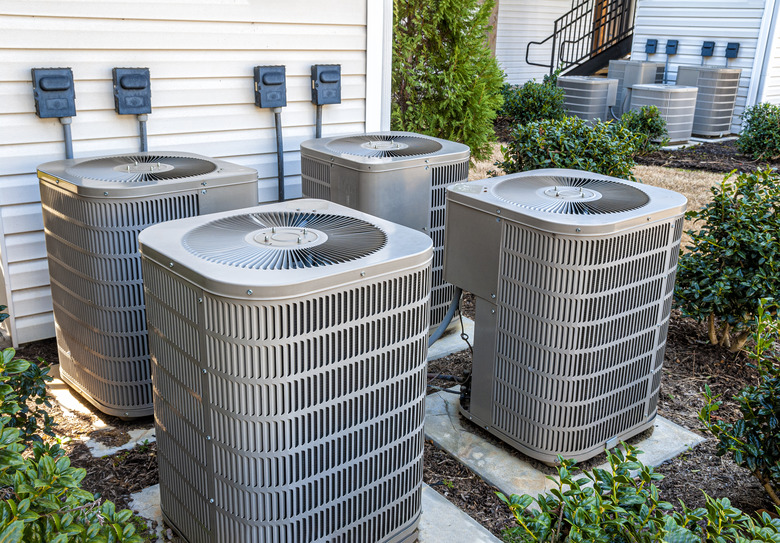Will A Clogged Condensate Drain Cause Loss Of Cooling?
We may receive a commission on purchases made from links.
The drain pan on your window air conditioner is there to catch condensate from the evaporator coils and direct it into a drain and outside the building. A clog in the air conditioner's drain can be messy, and it may even cause some damage, but it won't affect the cooling power of the appliance. However, it's a problem you'll want to fix as soon as you become aware of it.
When a central air conditioning unit drain clogs and the water level in the drain pan rises past a certain point, a float switch will deactivate the compressor. In this case, a clogged drain line does cause loss of cooling because the air conditioner won't work until you fix the problem.
Tip
A clogged condensate drain on an air conditioner doesn't affect the operation of the air conditioner, but if the air conditioning unit has a drain pan with a float and the pan overflows, the float will switch it off.
Where Does Condensate Come From?
Where Does Condensate Come From?
An air conditioner works by circulating a refrigerant through a system consisting of two sets of coils. In the condensation coils, the compressor pressurizes it, turning it into a liquid and forcing it forward until it reaches a tiny aperture that is situated at the beginning of the second set of coils — the evaporator coils. The aperture is so small that it allows the refrigerant to pass only as a fine spray, and because the vapor pressure on the other side of the aperture is so small, the refrigerant vaporizes, which is a process that draws heat from the surrounding air and cools it.
The evaporator coils is where condensation occurs. The warm air surrounding the coils loses its ability to hold moisture as it cools, and the moisture precipitates out in a process identical to the one that occurs when warm, moist air in the atmosphere encounters a cold front. The precipitation collects on the coils as condensation, and as it accumulates, it drips into a pan at the bottom of the unit. From there, it empties into a drain to which is connected a plastic tube that carries it outside.
A Window Unit Clog Can Cause Damage
A Window Unit Clog Can Cause Damage
If the condensate drain in your window air conditioning unit is clogged, water accumulates in the drain pan and eventually overflows. Because it spills gradually without affecting the operation of the air conditioner, you might fail to notice it until the carpeting or flooring underneath the air conditioner is water damaged. Depending on how it seeps, the water can also damage the wall and the windowsill, and if there's an electrical outlet under the air conditioner, it could cause a short circuit, which in the worst-case scenario could start a fire. If the outlet under the air conditioner is a GFCI, it will trip before a short does any damage.
It's unusual for worst-case scenarios to occur, though; it's much more likely that you'll notice the leak before it does any major damage. Another problem, however, is that wet walls, floors and windowsills are breeding grounds for mold, and it's possible for the mold spores to spread on the breeze created by the air conditioner fan. That's something you definitely don't want to happen, and the best way to avoid it is to clear the drainage clog as soon as you notice the water.
Your Central Air Conditioner May Shut Off
Your Central Air Conditioner May Shut Off
A central air conditioner is much bigger than a window unit and produces a lot more condensate. The drain pan under the evaporator coils is usually drained by a 3/4-inch PVC plumbing pipe, and this pipe can get blocked by sediment and scale. If that happens, the air conditioner produces enough condensate to cause a minor flood, so manufacturers or installers supply a float switch to prevent this. If it switches off the compressor motor, you have to clean the drain before you can switch on the motor again.
The fastest way to clean the drain pipe is to cut it at a point close to the air conditioner and spray a jet of water into it. You have to cut the pipe to prevent the water from spraying back into the air conditioner, but you can easily repair the cut with a 3/4-inch PVC coupling, and because there's no water pressure, you don't even have to glue the fitting.
